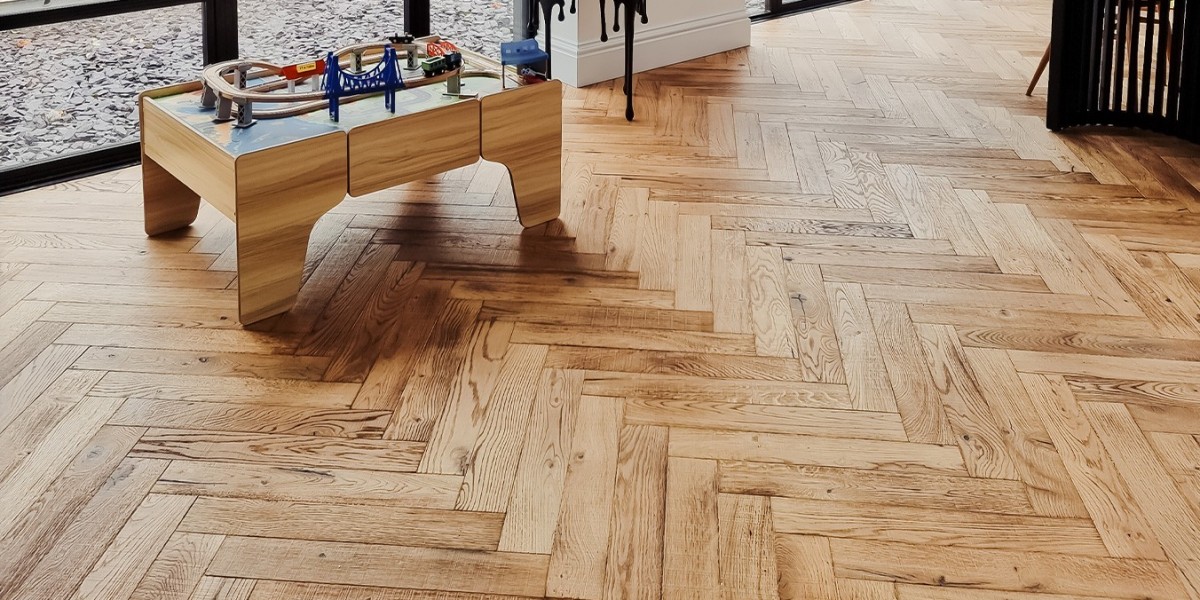Reclaimed wood flooring is more than just a design trend—it's a conscious choice that combines sustainability, history, and natural beauty. Sourced from old barns, factories, warehouses, and even sunken logs, reclaimed wood brings unique character and environmental benefits to any space. This type of flooring is ideal for homeowners, designers, and builders looking to make an eco-friendly statement while enjoying the charm of vintage wood.
What is Reclaimed Wood?
Reclaimed wood is timber that has been salvaged from older buildings or structures and repurposed for new uses, including flooring. Unlike newly harvested wood, reclaimed wood often features rich patinas, natural wear, and grain patterns that only time can create. Because it's already aged, it tends to be more stable and less prone to warping, making it a reliable choice for flooring.
Environmental Benefits
One of the main appeals of reclaimed wood flooring is its sustainability. By using wood that would otherwise be discarded or destroyed, reclaimed wood reduces the demand for newly harvested trees. This helps conserve forests and reduces the carbon footprint associated with logging and processing fresh lumber. Additionally, many reclaimed wood options are locally sourced, further minimizing environmental impact through reduced transportation emissions.
Aesthetic Appeal and Unique Character
Every plank of reclaimed wood tells a story. From nail holes and saw marks to variations in color and grain, no two pieces are exactly alike. This uniqueness adds a sense of authenticity and rustic charm that is hard to replicate with new, factory-produced materials. Whether used in modern, industrial, farmhouse, or traditional interiors, reclaimed wood flooring can enhance the atmosphere with warmth and character.
Popular wood species used in reclaimed flooring include oak, pine, chestnut, maple, and walnut. Each offers distinct textures and tones, allowing for customization to match any design aesthetic. Some finishes maintain the wood's natural look, while others are brushed, oiled, or stained for a more polished appearance.
Durability and Longevity
Reclaimed wood flooring is known for its strength and longevity. Much of the wood comes from old-growth trees that were harvested decades or even centuries ago—trees that grew slowly and produced dense, durable wood. These characteristics make reclaimed wood exceptionally sturdy and long-lasting, often outperforming newer wood flooring options.
Furthermore, the natural aging process has already occurred, which means the wood has acclimated and stabilized over time. This makes it less likely to shrink, expand, or crack with changes in humidity or temperature, which is a common concern with newer wood floors.
Installation Considerations
Installing reclaimed wood flooring requires careful planning. Because each board is unique in size and shape, installers must be experienced in handling non-uniform materials. The wood may need to be cleaned, milled, or treated for pests before use. Some suppliers offer pre-finished reclaimed wood, while others provide raw planks that can be customized on-site.
It's also important to work with reputable suppliers who can verify the origin and quality of the reclaimed wood. Look for companies that offer certification or documentation, ensuring that the wood is ethically sourced and properly prepared for installation.
Cost and Value
Reclaimed wood flooring tends to be more expensive than traditional hardwood, primarily due to the labor-intensive process of sourcing, preparing, and restoring the material. However, many homeowners and designers consider it a worthwhile investment. Not only does it offer unmatched aesthetic appeal, but it also adds value to a property thanks to its uniqueness and eco-friendly nature.
Over time, reclaimed wood floors can become a standout feature in a home, appealing to buyers who appreciate sustainable living and distinctive design.
Conclusion
Reclaimed wood flooring offers a perfect blend of beauty, history, and sustainability. Its durability, one-of-a-kind appearance, and minimal environmental impact make it an attractive choice for anyone seeking a timeless flooring solution. While it may require a larger upfront investment and careful installation, the rewards in charm, character, and conscience make reclaimed wood a flooring option worth considering.







